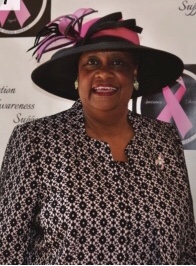
Last year, I attended a luncheon with colleagues. The keynote speaker took to the stage and we were rapt with anticipation. The speaker was a woman who had experienced an incredibly violent event. Her attacker had taken her hostage and she had managed to escape and live to tell this harrowing story. But the story was buried under about 35 minutes of statistics and data. By the time she started to share her powerful experience, the clock had almost run out. Every person at my table, and I’m sure in the room, was panting for more. We wanted a detailed account that would help us to understand what she had experienced and how she had survived it. But we didn’t get that because the speaker failed to showcase the story.
Effective storytelling is a critical part of leadership. Why? Because our stories are accounts of our experiences and experience establishes credibility. No one is interested in what a novice has to say. Your team wants to know what you know and they want to know how you know it. The what and how boils down to experience and our stories demonstrate that experience. Remember that everyone in an organization should be a leader. And everyone who is part of executing a successful event should be a leader. The speaker that I referred to earlier had a leadership role that day. Anytime that you take command of a podium, you are leading the room. Good leaders need good stories and they need to tell those stories effectively.
Stories help us to sell ourselves and to solve problems. Those are two things that leaders are concerned about: getting their team to buy in and fixing things that have gone wrong. Stories help us to connect with people. If there’s no connection, nothing gets done.
As a trial lawyer, it’s critical that I connect with people. Every case is a story, and I am tasked with telling that story in such a way that jurors or judges will be compelled to accept my point of view. Good stories require details and memorable facts. Several years ago, I handled a case that involved a 75-year-old woman and a piece of land. Ms. Jenkins had inherited this property from her aunt. The property was located in a small, rural town and had been in Ms. Jenkins’ family since the 1800s. A man who owned land adjacent to Ms. Jenkins’ place, decided that he would fence off her property and claim it as his own. Ms. Jenkins didn’t live on the property but would visit regularly and during one of those visits, Ms. Jenkins noticed the fence. She filed suit to reclaim her property and the case went to trial. During the trial, Ms. Jenkins testified that growing up, she had visited the property many times. She stated that her aunt lived there in a red house. Ms. Jenkins, running and playing on the land and picking plums from the fruit trees that dotted the landscape. Ms. Jenkins’ command of details and historical events was impressive, but it was not enough to convince the trial judge.
We lost the case but quickly appealed. I wrote the brief for the appellate court and in the brief, I spent time discussing metes, boundaries, titles and all manner of property law. But I was careful to showcase Ms. Jenkins; I wrote about the 7-year-old girl who played ate fruit from her aunt’s plum trees. I referred to the home on the land, not by its municipal address, but, instead, I called it “the old red house.” My goal was to tell a memorable story while providing evidence that the property belonged to Ms. Jenkins. We won the case on appeal and Ms. Jenkins was once again the sole owner of the old red house and the land that it sits on. I am convinced that the details of Ms. Jenkins’ life made a difference to the appellate judges who were tasked with deciding the case. Details and vivid language matter whether you’re delivering a speech, writing a legal brief, or rallying your team to complete its mission in the eleventh hour.
Here are 5 ways to develop and use stories to motivate your team:
- Seek out new experiences: Great stories are found when we exit the comfort zone and break new ground.
- Study history: Historical figures lived fascinating lives filled with awe-inspiring adventures; tell their stories and connect them to your present mission.
- Set aside the data and focus on personalizing experiences: focus on people not technical information.
- War stories are welcome so long as they are relevant and told in a compelling way.
- Consider taking a course in storytelling: there are lots of on-line and live courses that teach that can teach you how to translate your experiences into stories that matter.
Let’s all strive to live a life worth telling others about.


